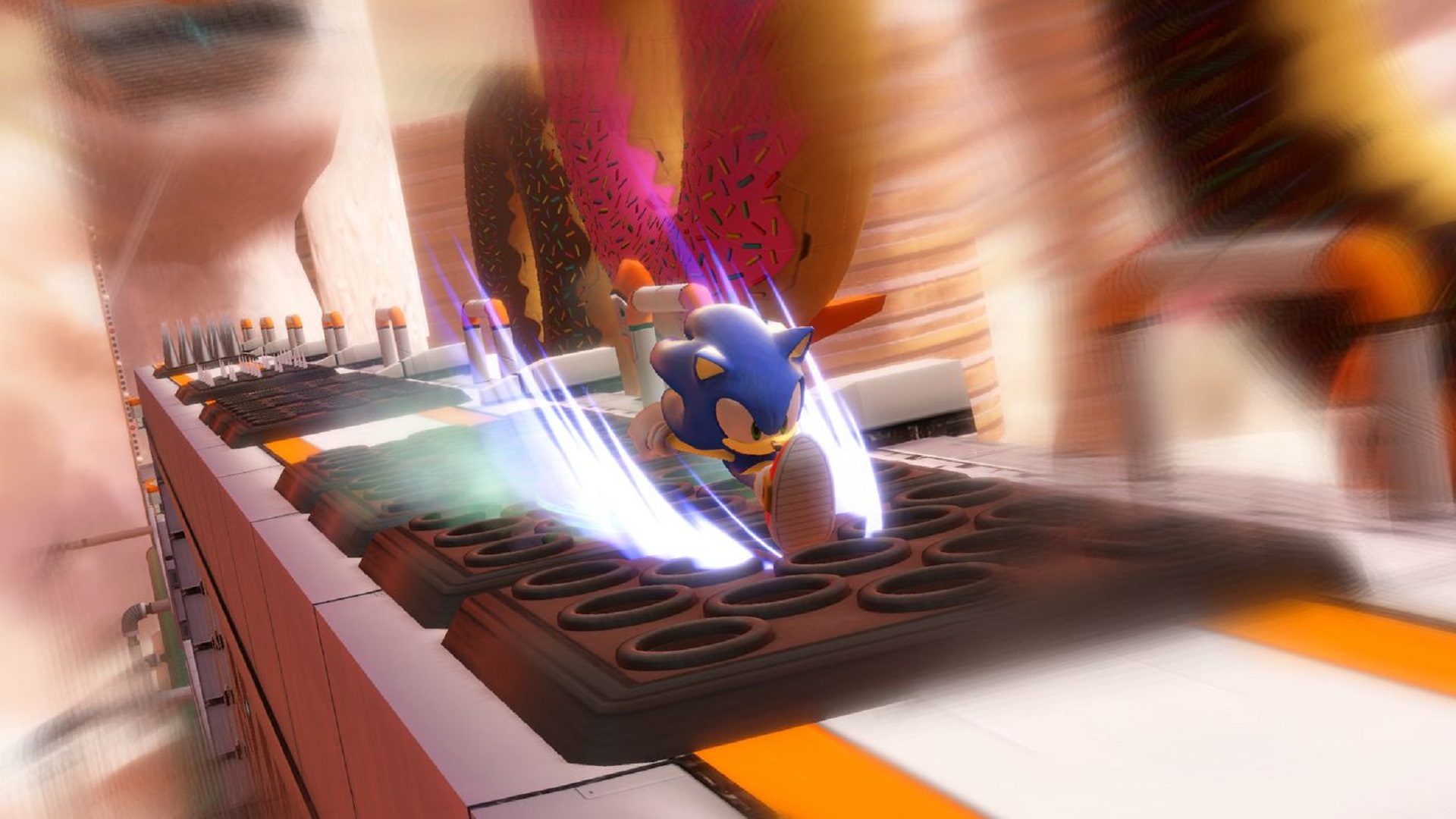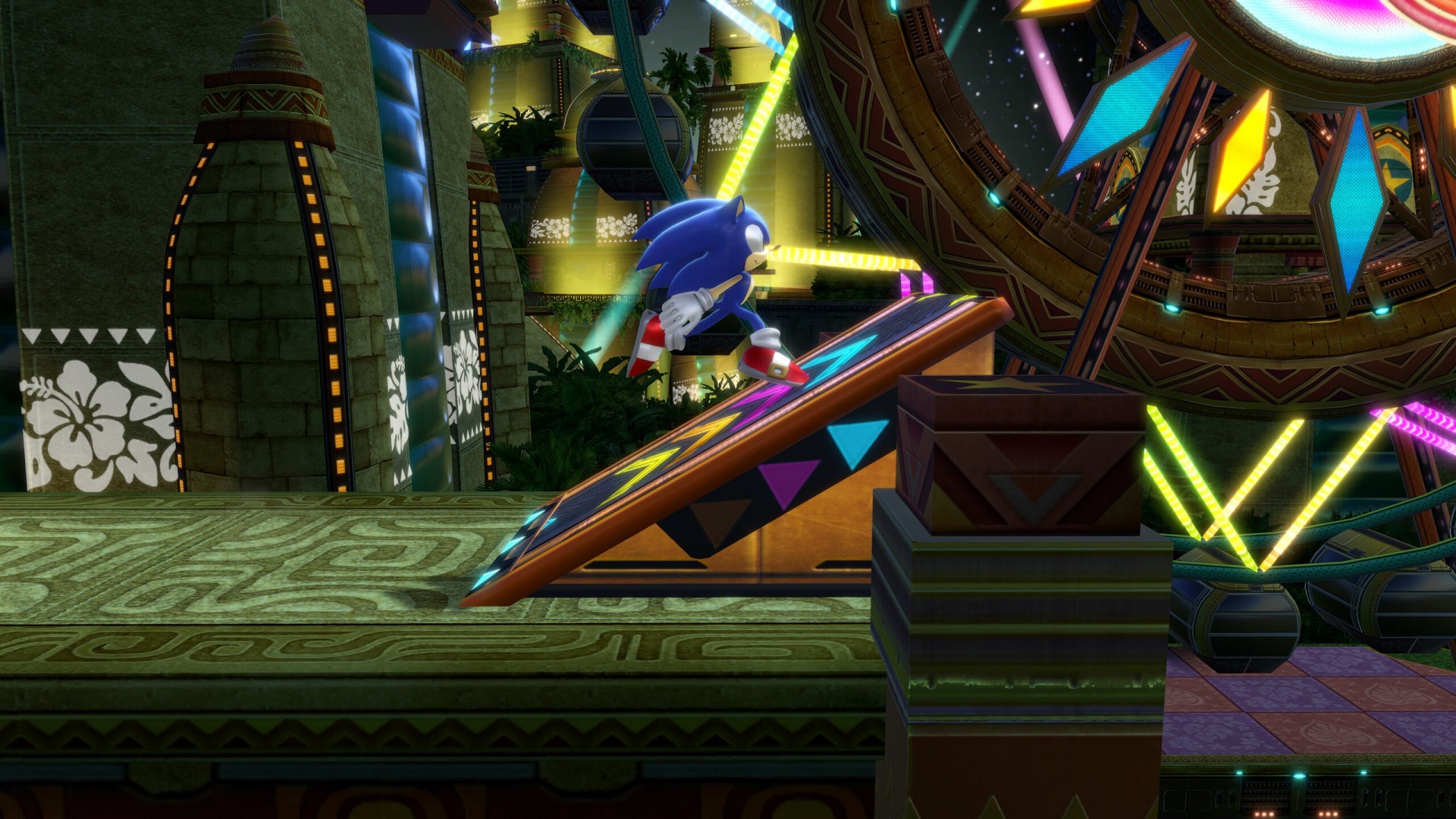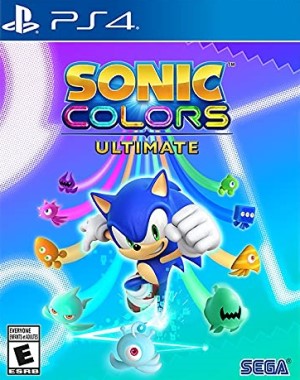
Sonic hasn’t had the best time since making the transition to 3D. I’m not saying anything new here, everyone knows this, and the franchise’s struggles with transitioning its blistering quick 2D platforming gameplay into 3D while retaining the design principles that made the original games beloved and still being, you know, good, have been well documented. Sonic’s misfires in the 3D space have been so spectacular, and delivered among the worst games ever made so consistently, that people often forget just how great the series could be when it was firing on all cylinders.
That has never happened with a 3D Sonic game, but some have come closer to achieving greatness than others. None have come closer than Sonic Colors did, when this unassuming title launched exclusively on the Wii over a decade ago. So it makes sense that, in celebration of Sega’s mascot’s 30th anniversary, this one Sonic game comes the closest to distilling the essence of Sonic at the peak of his powers, and realizing them in a 3D game would be the one that they turn to. And so, we get Sonic Colors Ultimate.
Ten years later, it still mostly holds up – that’s what happens when the core game design was actually good, rather than relying on gee whiz gimmickry that won’t stand the test of time. While Sonic Colors always had issues, and those issues are exacerbated with the passage of time so they stick out in Ultimate more, it’s still a fundamentally good time and an engaging game.
"While Sonic Colors always had issues, and those issues are exacerbated with the passage of time so they stick out in Ultimate more, it’s still a fundamentally good time and an engaging game."
You know how it goes this time – another convoluted and contrived scheme by Dr. Eggman, and another attempt by Sonic to take Eggman down. In this specific instance, Eggman has set up an amusement park in low earth orbit, which appears to be a front for a sinister scheme in which he is leveraging the power of alien creatures known as wisps to further his plans for world domination. It’s a silly premise, but unlike so many other Sonic games, Colors knows to largely keep it out of the way, rather than providing overwrought context to the player and making the game buckle under the weight of its own unnecessary story. Sonic Colors is pretty lightweight as far as storytelling goes, which works to its benefit. The few cutscenes we do get are pretty snappy and quick, with some cute humor that will endear the game and the character to younger players especially.
Unlike so many modern Sonic games, this adventure is a solo outing – in that you only play as Sonic. None of the menagerie of creatures that form up his ever expanding group of friends is along for the ride (though Tails is in the game too), and you’re never controlling anyone other than Sonic – though of course, Sonic does end up imbibing the character of a lot of the wisps he is saving. All of this works greatly to the game’s benefit. The controls, move set, and levels are all designed around one baseline set of abilities. Rather than having to balance everything for a smattering of half-developed characters with their barely fleshed out distinct play styles, everything is designed around Sonic, how he is controlled, and the abilities he has, with or without wisps. This leads to an unusually strong showing in terms of level design, boss fights, and the like for a 3D Sonic game – remember, even the fan favorite Sonic Adventure games suffered from having to design around multiple characters. Colors is a look at how this series can benefit from having a leaner focus, and we get some of the strongest level design and mechanics we have seen in a 3D Sonic game as a result.
Of course, Sonic Colors did stand out at the time because it was among the first showings of what would go on to be referred to as the “boost formula”, and as mentioned, it was a pretty strong showing at that. The novelty of getting an actual good Sonic game in 3D after so long, plus one that was distinctly differently structured from the “Adventure” template the 3D games had followed through to then, did help raise the profile of the discourse and reputation the game enjoyed. More than ten years later, we’ve had several 3D Sonic games following this same formula – with the last one, Sonic Forces, being among the lowlights in a series with some incredible lowlights – so that shine has worn off, and people also find themselves itching for a return to the Adventure style. While this does remove one of the factors that made Colors so well received at the time, it nonetheless does not change that the game itself is fundamentally well designed – in fact, arguably at its core, it’s better designed than any 3D Sonic game that followed, including Generations, because it is not juggling multiple play styles between Modern and Classic Sonic.

"We are looking at two fundamentally contradictory game design principles at play in Sonic – building speed and momentum, and precision platforming. Precision platforming obviously requires the player to slow down and consider things first, before then traversing the hazards they are presented with; building momentum and speed require you to run, run, run, without stopping."
This has helped Sonic Colors hold up pretty well. I would argue that the fundamental problems that lie at the core of every Sonic game – this includes the 2D games too, mind you, though I do feel said problems are significantly worse in the 3D games than the 2D ones, which can work around them better – do manifest in Colors too. Occasionally, these problems do hold it back at times. Most notably, we are looking at two fundamentally contradictory game design principles at play in Sonic – building speed and momentum, and precision platforming. Precision platforming obviously requires the player to slow down and consider things first, before then traversing the hazards they are presented with; building momentum and speed require you to run, run, run, without stopping. Sonic does expect you to memorize levels and run them again and again, the better to be able to imbibe and reconcile both these principles, but during your first run through any course, it can often be a tug of war between the two.
Of course, like I said, Sonic Colors does manage to turn even this into a strength. Finishing a course and getting slapped with a C or a D grade often acts as all the incentive you need to go back and run that course again, and again, and again, until you’ve memorized it so well you’re effortlessly getting the highest possible marks each time. Some expertly hidden collectibles add further replayability to each course.
A lot of the attention of the “Ultimate” upgrade for Sonic Colors has focused on the visual side of it, which makes sense – the original was a Wii title, which means it’s a standard definition game remastered for HD for the very first time. On the whole, I would argue the visual update is clean and reasonable (if not astounding or worth the whole re-release in and of itself), though there are certain complaints I can foresee coming in from some quarters. As an example, the updates have very definitely changed the look and aesthetic of a lot of areas due to the differences in lighting and color (heh) saturation, and I can easily see many preferring how the original game looked as a result; but on the whole, I think the new aesthetic in those areas isn’t worse, just different.

"The game’s Wii roots are especially clear and apparent in cutscenes. However, the art style is strong, and that, along with a bump up to 60fps for the frame rate, helps keep the game look pleasant to look at."
The remastering is very clearly nowhere close to the more thorough facelifts we have seen in other similar platform re-releases; for example, this is nowhere close to the overhaul that Crash or Spyro saw with the N.Sane or Reignited trilogy releases. The game’s Wii roots are especially clear and apparent in cutscenes. However, the art style is strong, and that, along with a bump up to 60fps for the frame rate, helps keep the game look pleasant to look at. While it’s undeniable it could have looked even better, it’s still a pretty good looking game, that passes muster and scrutiny, if not as triumphantly as it otherwise could have.
That’s really the case with Sonic Colors as a whole – while its reputation may lead you to expect an all time great platform, it’s really not that. It is very good, mind you, and it’s compelling and engaging and probably the most smartly designed 3D Sonic game we have ever received. All of that alone makes it worth playing, particularly since Colors is without question the best implementation of the so called “boost” formula as well. The stumbles and blemishes that come along the way, well, that’s just part and parcel of being a Sonic fan at this point. Embrace them, and enjoy Dr. Eggman’s Wild Ride.
This game was reviewed on the PlayStation 4.
Fundamentally a well designed game that has mostly held up well; good replayability; charming writing and humor that will appeal to kids
The remastering isn't as thorough as it could have been; some design flaws and issues stand out much more now than they did back when the game first released



















Share Your Thoughts Below (Always follow our comments policy!)